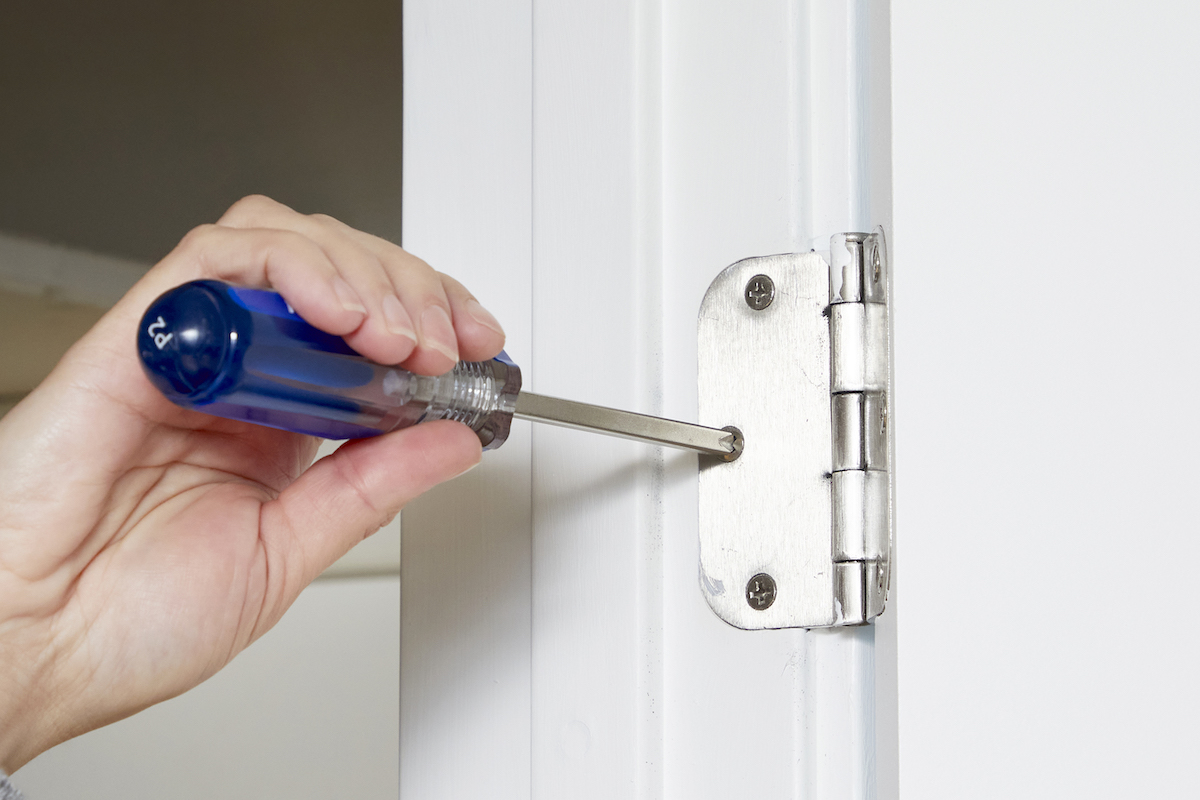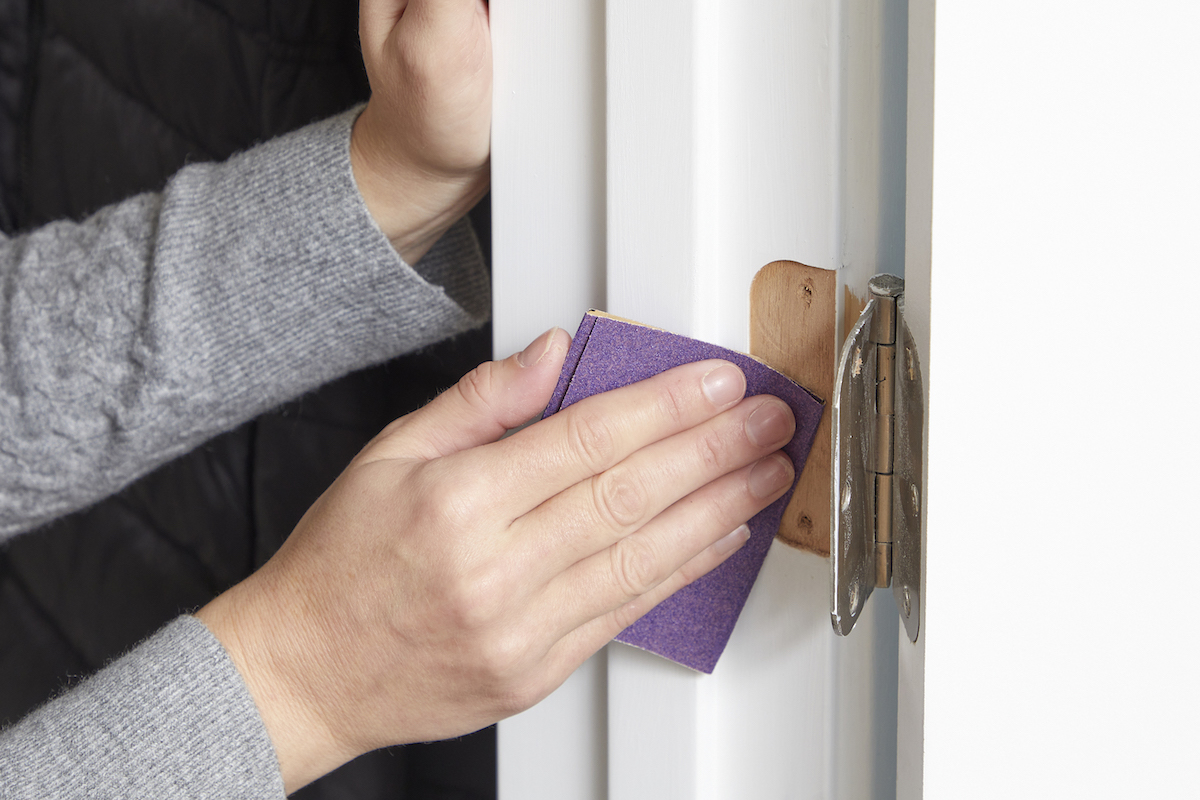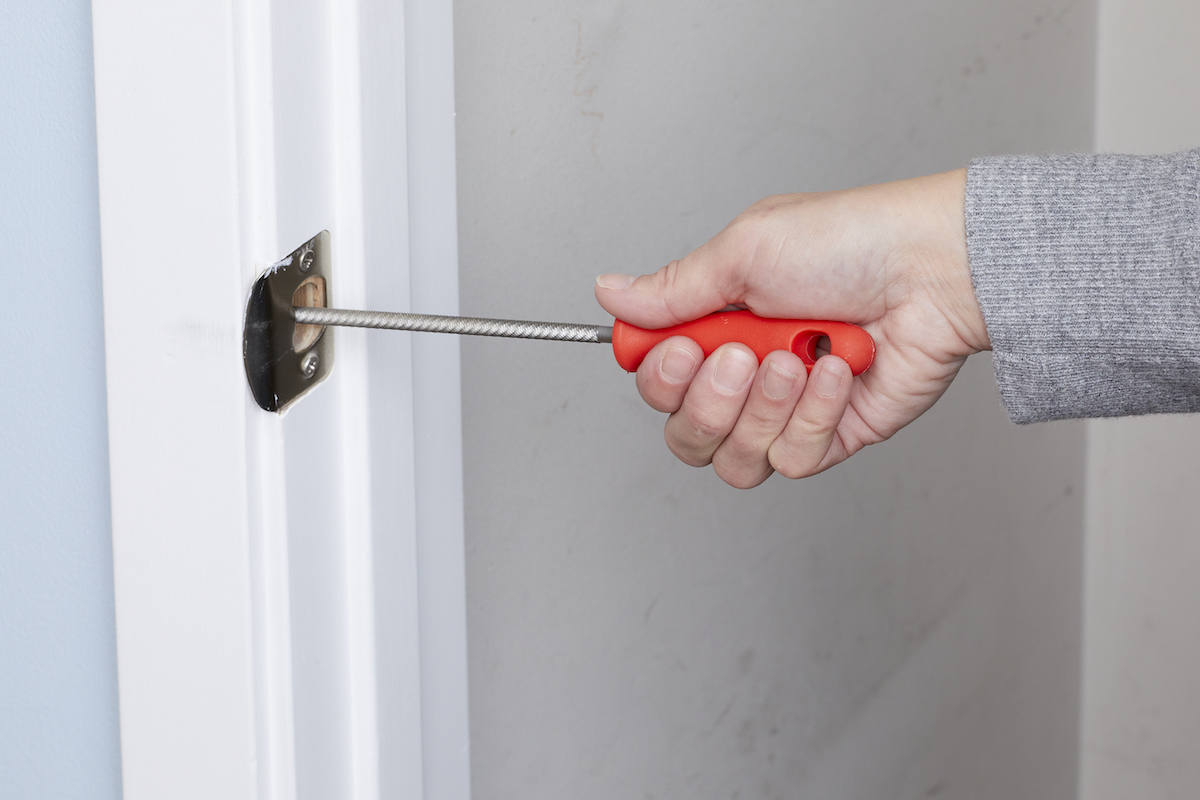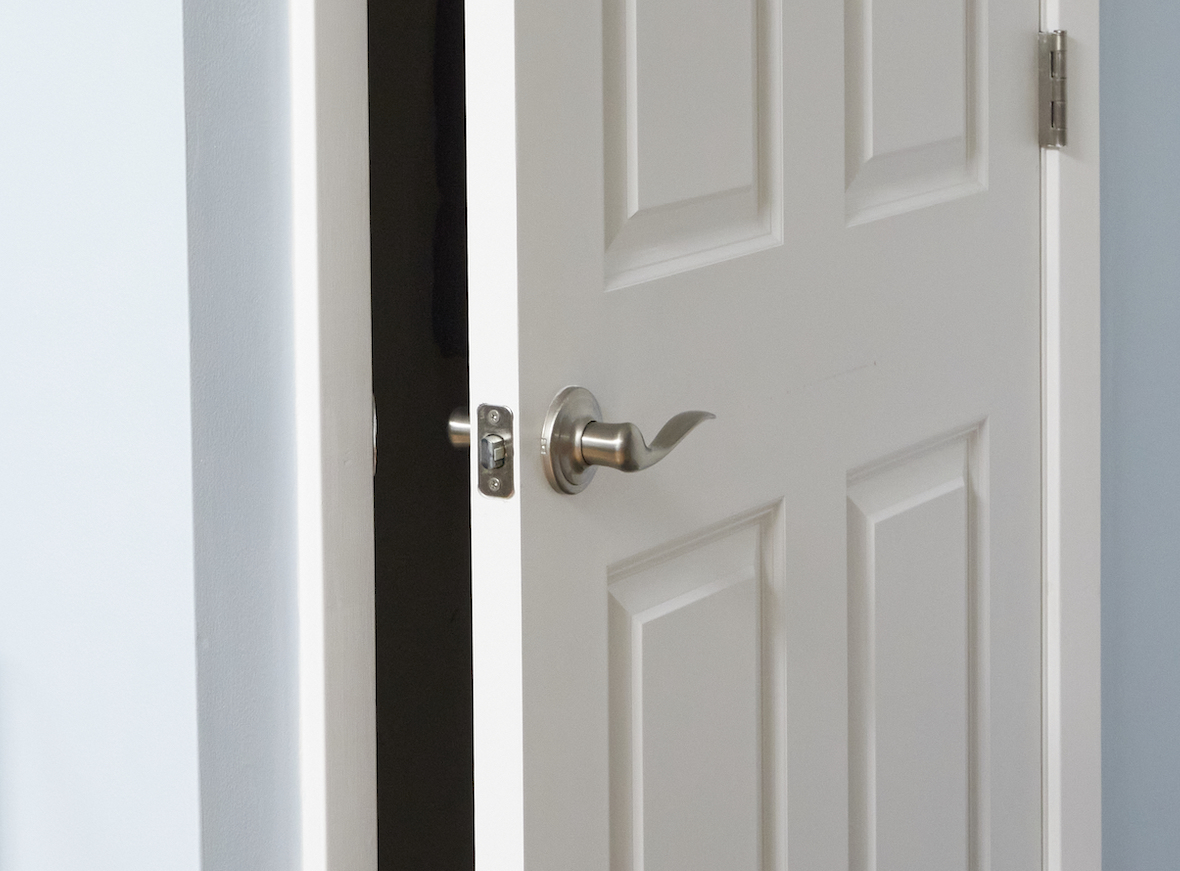We may earn revenue from the products available on this page and participate in affiliate programs. Learn More ›
Q: We have a bathroom door that sometimes won’t latch, so the door can still be opened with a simple push. This has led to more than one embarrassed guest. Why won’t the door latch properly, and how can we fix this issue?
A: When a door won’t latch, the latch is missing the hole in the strike plate on the door frame. This misalignment often happens with frequent use of a door, as hinges can allow a door to sag over time.
There are a few easy ways to help figure out the cause of the problem, and many causes are fairly easy to fix. Determining the cause involves checking where the latch is hitting on the strike plate or door frame. Where the latch hits can reveal whether the issue is caused by loose hinges, misaligned hinges, a narrow strike plate hole, or a misaligned strike plate hole.
Test to determine where the misalignment is happening.
Before trying to correct the problem, it’s important to know whether the latch is missing above or below the strike plate hole. To test where contact is occurring, apply lipstick or a similar marking material to the door latch. Put a strip of masking or painter’s tape on the strike plate, then close the door. Then, open the door. The lipstick should have left a mark where the latch contacted around the strike plate hole.
If the mark is below the strike plate hole, then the problem may be caused by sagging hinges. However, if contact is made above the strike hole, then it’s more likely that the position of the strike plate is the issue.
1. Tighten the hinges using a screwdriver.

Older doors and doors that are frequently used may experience sagging at the hinges as gravity pulls the door down. This changes the swing of the door and can result in a misaligned door latch that contacts below the strike plate hole. Use a screwdriver to tighten the screws in the door hinges so that the door is properly supported by the door frame.
If tightening the screws doesn’t solve the problem, consider using a longer 3-inch screw on the door jamb side of the hinge to grab the wall framing and pull in the entire door frame slightly. Drive the 3-inch screw into the top hinge to help lift the door into position, if the latch contacts below the strike plate hole. Drive the screw into the bottom hole to help pull the door down, if the latch contacts above the strike plate hole.
2. Shim or sand down under hinges.

If the problem persists after adjusting the screws in the hinges, then the door frame may need to be shimmed or sanded. Shimming the hinges involves removing the hinges from the door frame and cutting a small piece of cardboard (or similar material) to fit into the hinge mortise. When the cardboard is in, replace the hinge and check the door. Shimming typically corrects the alignment of the door if the problem is related to sunken hinges. The extra material adds an additional cushion to support the hinge and balance the door.
However, the problem may be caused by hinge mortises that are too shallow or not large enough for the size of the hinge. In this case, remove the hinges and sand down the hinge mortise to the correct depth, and sand the edges of the mortise to accommodate the hinge. Replace the hinges and verify that they sit flush with the door frame and that the door is properly balanced.
3. Enlarge the strike plate hole with a metal file.

A properly balanced door will close correctly, but the latch and strike plate hole may still be out of alignment. If the adjustments to the door didn’t solve the problem, the cause may be the strike plate hole. Check whether the latch is contacting the strike plate above or below the hole and how much the latch is misaligned. If it’s out of alignment by more than ⅛ inch, then you may need to move the entire strike plate hole (see how to do this below). If the misalignment is only ⅛ inch or less, then try to enlarge the hole.
After removing the strike plate from the door frame, use a metal file to enlarge the strike plate hole. A half-round file will match the curvature of the latch hole, making it the best choice for widening the strike plate hole. If this is the problem, the latch should slide into the strike plate hole without the door being lifted, forced, or otherwise manipulated outside of the normal push and pull operation of a door.
RELATED: How to Fix a Squeaky Door
4. Move the strike plate up or down.

After using the lipstick test to check the contact position of the latch in relation to the strike plate hole, you may discover that the latch is more than ⅛ inch out of alignment. Even if the strike plate hole was larger, the door still won’t latch properly. After checking that the door is balanced and the hinges are tight, then the next step is moving the strike plate to a new position that is properly lined up with the latch.
First, remove the strike plate from the door frame. Then, use a sharp chisel and a hammer to enlarge the strike plate mortise, allowing the strike plate to be moved up or down, depending on the alignment of the latch. Check the swing of the door and verify that the new position for the strike plate is lined up with the latch so that it will close smoothly without rubbing or catching on the frame. If the latch and new strike plate position are properly aligned, then drill two small holes and secure the strike plate. Test the door to ensure that it closes and latches properly.
RELATED: How To: Install Door Hardware
Finish by filling any gaps with a wood filler and paint or stain.
If tightening the hinges or using longer screws to adjust the alignment of the door fixes the issue, then the problem is solved. However, if you shimmed or sand down the hinges, enlarged the strike plate hole, or moved the strike plate, then there may be some clean-up and touch-up required to finish the job.
A wood filler that matches the color of the door frame is a good option to quickly fill old screw holes and gaps in the door frame that are left from moving the strike plate or shimming the hinges. A paintable wood filler and a coat of paint or stain that matches the rest of the door frame completes the repair.


